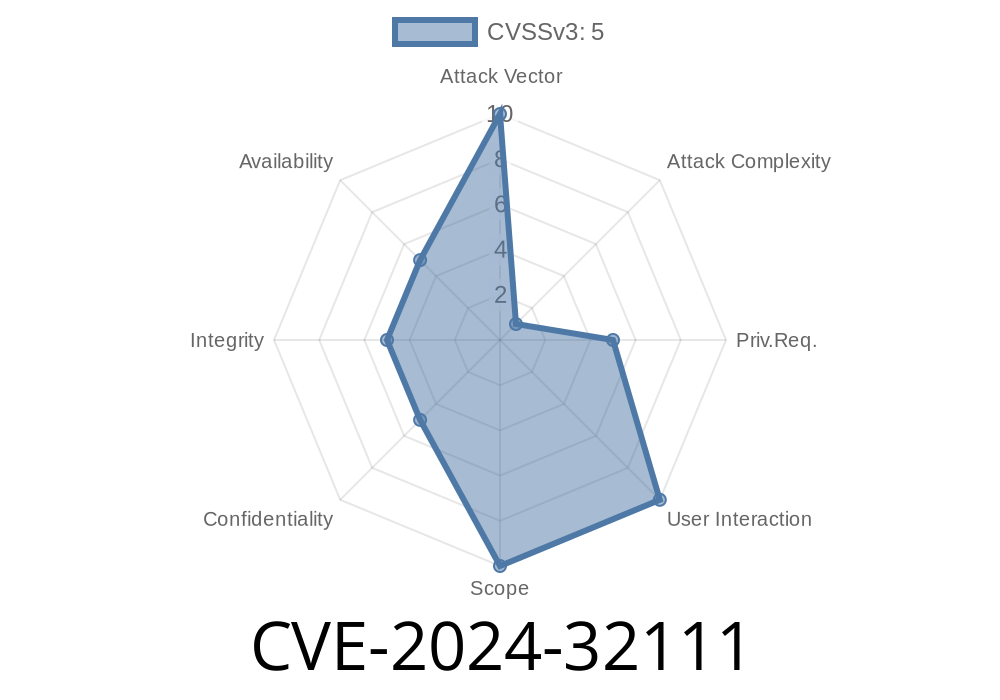A critical security vulnerability, identified as CVE-2024-32111, has been discovered in numerous versions of the popular content management system (CMS) WordPress. The vulnerability is categorized as an Improper Limitation of a Pathname to a Restricted Directory ('Path Traversal') issue. This vulnerability allows malicious actors to perform a Relative Path Traversal attack on affected installations. In this post, we'll examine the exploit details, code snippets, and provide references to original sources of information to help website administrators protect their WordPress sites.
Exploit Details
The Path Traversal vulnerability enables attackers to access files and directories that are stored outside the intended directories in the server. As a result, threat actors can gain unauthorized access to sensitive data, execute arbitrary code, or even cause a complete compromise of affected sites.
Code Snippet
In this code snippet, we can see how the vulnerability might be exploited in a vulnerable WordPress installation:
GET /path_to_vulnerable_plugin/index.php?file=../../../../wp-config.php
Using this attack vector, an attacker can request sensitive files, like the "wp-config.php" file, which contains important configuration information and database credentials.
For more details about the CVE-2024-32111 vulnerability, please refer to the following sources
- CVE-2024-32111 Official Record
- WordPress Core Security Updates
In Conclusion
The CVE-2024-32111 Path Traversal vulnerability poses a significant security risk for WordPress website administrators. It is vital to ensure that the WordPress installations are up-to-date and secure. Immediate action should be taken to update affected installations and keep a close eye on the WordPress and security community for future updates and vulnerability disclosures.
Timeline
Published on: 06/25/2024 14:15:11 UTC
Last modified on: 06/27/2024 19:20:35 UTC
